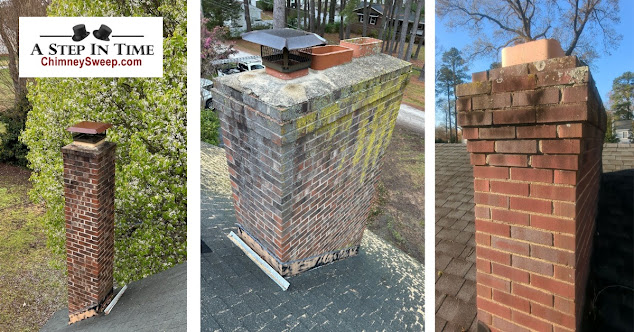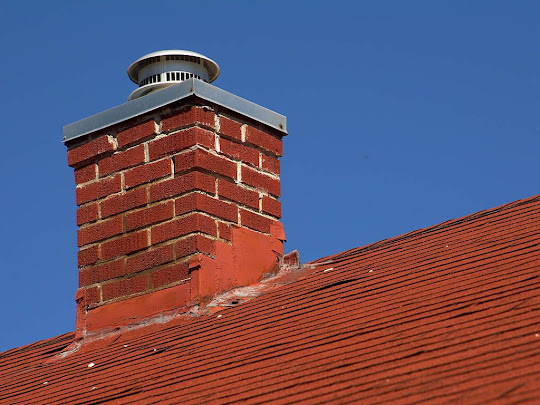Everything You Need to Know About Chimney Mold
Ever wondered if there is an undetected threat hiding in your fireplace? We’re discussing chimney mold, which is an invisible danger which can cause severe harm to your house. Keep reading to find out more about this hidden issue along with potential solutions. In addition to chimney mold being unappealing, it may additionally trigger allergy and breathing issues, risking the health of your family. Mold finds the perfect conditions to grow in your chimney if temperatures fluctuate and moisture collects there, often without you being aware of it. Relax though! You can take preventative steps to stop chimney mold growth while keeping a mold-free home by being conscious of the cause and signs associated with the condition.
What causes Chimney Mold?
The conditions of the environment with high humidity and moisture buildup are favourable for the growth of chimney mold. Infiltration of water is one of the primary contributing factors of chimney mold. Rainwater may get into the chimney due to leaks in the chimney construction, which can be a result of broken bricks, faulty flashing, or an incorrect chimney cap. In addition, when humid, warm air from the lower level of the home comes into touch with the cooler air inside the chimney, moisture may form inside the chimney. Eventually, mold growth is caused by the ideal environment for development that this moisture provides for mold spores.
A chimney system’s lack of ventilation may make moisture problems worse while promoting the growth of chimney mold. Proper airflow from a well-ventilated chimney helps get rid of moisture and maintains optimum conditions that prevent the growth of mold. However, if the chimney isn’t ventilated sufficiently, moisture may get trapped inside and promote the formation of mold. The airflow blockages and the growth of mold can be a result of various factors, such as the design of the chimney, blockage inside the flue, and improper setup of ventilation components.
The presence of living substances in the chimney system is another element that causes chimney mold. Garbage from wood-burning fireplaces, including leaves, twigs, bird nests, and creosote buildup, may build up inside the chimney as time passes. The mere existence of these organic compounds gives mold spores food to consume, thereby encouraging the growth of mold. In addition, moisture can be collected by creosote accumulation, resulting in a moist environment that is beneficial to the growth of mold. It is essential to perform routine chimney care, including cleaning and inspections, to eliminate organic debris and stop the growth of mold.
How to detect mold?
It takes an in-depth examination in addition to your sense of smell and visual signals to find mold in your chimney. With a torch, inspect the chimney’s interior initially, being particularly mindful of dampers chimney crown areas and other areas where dampness tends to collect. Inspect the chimney walls for any dark spots or cracks that might be signs of mold growth. In addition, pay close attention to any musty odours emerging from the chimney or fireplace as they could suggest the existence of mold
Consider applying a mold testing kit, readily available at hardware stores, for a more convincing assessment. Typically, these kits include either adhesive strips or swabs for collecting samples from suspected mold locations. To ensure accurate sample collection, follow the kit instructions. Materials can be sent to a laboratory for examination. On the other hand, get the advice of a licenced chimney sweep or mold inspector if you’re not sure how to recognise mold or if you suspect that it’s a serious issue. These experts have the expertise and equipment required to carry out an in-depth inspection and spot any mold growth in your chimney.
In the end, being attentive and proactive in inspecting your chimney for mold can help detect issues early on, which allows prompt repair. By keeping the chimney dry and clean of debris, regular chimney maintenance and cleaning also substantially contribute to avoiding the development of mold formation. You can ensure a mold-free and safe atmosphere in your home by applying these techniques and paying careful attention to any indicators of mold growth.
How to Prevent Mold?
Maintaining a healthy living space is dependent upon preventing mold growth in your chimney. As excessive moisture fosters the growth of mold, start making sure the chimney has adequate ventilation to avoid moisture buildup. To additionally reduce moisture intrusion, installing a chimney cap acts as a barrier against animals, debris, and rainwater. Repair flashing, masonry cracks and gaps surrounding the chimney crown to prevent water infiltration, as well as regularly inspect the chimney for damage, should you discover any leaks and act swiftly to stop them.
It’s critical to keep an eye on humidity levels, especially when using a fireplace, as high moisture increases the buildup of moisture. For the most effective outcomes, keep the humidity level between 30 and 50% and, if required consider using a device that removes moisture. Regular chimney cleanings are also vital to reducing mold-friendly circumstances by removing soot, creosote accumulation, and organic waste. Moisture pooling and extra moisture issues can be prevented by keeping adequate outside drainage to guarantee snowfall doesn’t get in from the chimney foundation.
To reduce the chance of mold development, use mold-resistant paint or plywood while performing repairs or improvements to the chimney. By maintaining the area around the chimney regularly, you may decrease moisture retention by avoiding debris accumulation while improving airflow. Mold growth in your chimney may be successfully avoided by putting these preventive measures in place and being careful about maintenance. This will keep your home safe and healthy for you and your family.

.jpg)

.jpg)
Comments
Post a Comment